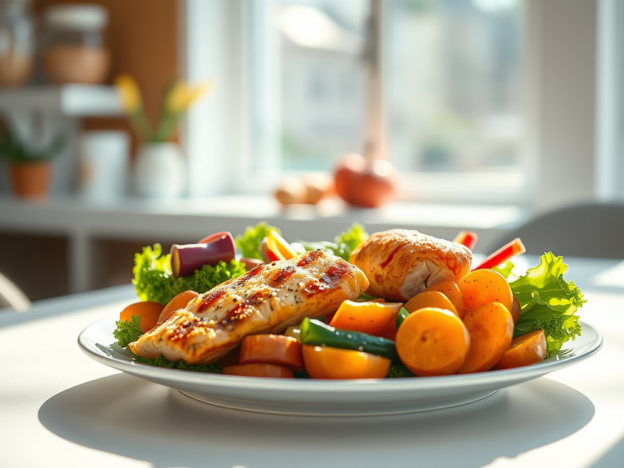Strength training is a powerful tool for baseball players looking to enhance their performance, whether it’s increasing swing power, boosting throwing velocity, or improving overall agility on the field. However, not all strength training is created equal, and certain mistakes can actually hinder progress or lead to injury. Let’s explore five common strength training pitfalls that baseball players encounter—and, more importantly, how to avoid them. By understanding these missteps and incorporating the right training strategies, players can build the strength, flexibility, and resilience needed to excel at every level of the game.
Overemphasizing Upper Body Work
The Mistake: Many baseball players prioritize upper-body strength, thinking that stronger arms, shoulders, or chest muscles alone will improve their swing or throwing speed. However, an overemphasis on the upper body often creates muscle imbalances, reduces flexibility, and can increase the risk of injury, especially in the shoulder and elbow joints. Baseball is a full-body sport that relies on a coordinated transfer of power from the legs, through the core, and into the upper body.
How to Avoid It: A balanced strength training program should incorporate lower-body and core exercises to develop a stable foundation. Exercises like squats, lunges, and deadlifts build the lower body strength that powers explosive baseball movements. Core exercises like Russian twists and rotational planks enhance the transfer of power through the torso, directly benefiting hitting and throwing mechanics.
Example Routine: Incorporate lower-body exercises like hex bar deadlifts and goblet squats twice a week, paired with core-strengthening moves to improve balance and stability.
Ignoring Mobility and Flexibility
The Mistake: In the pursuit of strength gains, flexibility and mobility often get left behind. For baseball players, maintaining range of motion in key areas—such as the shoulders, hips, and thoracic spine—is critical. A lack of mobility can lead to reduced performance and a greater risk of injury, particularly for pitchers who require a high degree of shoulder flexibility and for hitters who depend on rotational movement.
How to Avoid It: Incorporate mobility exercises into both warm-up and cooldown routines. Stretching, dynamic warm-ups, and exercises targeting hip mobility and shoulder stability should be a regular part of training. Work on exercises like shoulder pass-throughs with a resistance band, hip flexor stretches, and T-spine twists to maintain flexibility in these key areas.
Example Routine: A simple 10-minute dynamic warm-up focusing on hip and shoulder mobility can go a long way in maintaining flexibility and preventing injury.
Overdoing Heavy Lifting During the Season
The Mistake: Baseball players who continue intense, heavy lifting during the season often experience fatigue, soreness, and even burnout, which can negatively affect game-day performance. It’s important to remember that while off-season training focuses on building strength, the in-season focus should shift toward maintaining strength without excessive fatigue.
How to Avoid It: Transition to maintenance strength work during the season, prioritizing lighter loads, higher reps, and reduced frequency. In-season training should aim to keep the body strong and resilient without wearing down energy reserves. Focus on compound lifts at a lower intensity and incorporate stability and bodyweight exercises.
Example Routine: Perform a 2-day in-season strength routine with lighter weight and higher reps, focusing on full-body stability exercises like kettlebell goblet squats and push-ups.
Neglecting Core and Rotational Training
The Mistake: Core strength and rotational power are crucial for baseball players, but many overlook these areas in favor of traditional upper-body and lower-body exercises. Neglecting core training means missing out on the benefits of improved stability and balance, which are essential for swinging a bat, throwing a pitch, and sprinting on the field.
How to Avoid It: Incorporate specific core exercises that emphasize rotational strength and anti-rotation stability. Medicine ball exercises, such as side slams and rotational throws, directly target the core in a way that mimics baseball movements. Anti-rotation exercises like the pallof press or plank variations are also effective at building core stability without excessive strain on the lower back.
Example Routine: Add medicine ball side slams and cable rotations to your regular workout to build the rotational power necessary for a strong swing.
Skipping Recovery
The Mistake: Many athletes underestimate the importance of rest and recovery, especially young players who are eager to improve. Overtraining and skipping recovery can lead to overuse injuries, muscle fatigue, and even a decline in performance.
How to Avoid It: Emphasize the importance of rest and recovery in your routine. This includes taking full rest days, getting adequate sleep, and engaging in light recovery activities like stretching or foam rolling. Active recovery helps the muscles rebuild and prevents fatigue from accumulating over the season. Additionally, nutrition plays a role in recovery—ensuring players are properly hydrated and consuming enough protein and carbohydrates will aid muscle repair and growth.
Example Routine: Dedicate at least one day a week to active recovery, focusing on light stretching, foam rolling, and mobility work to keep muscles flexible and prepared for the next workout.
Incorporating strength training into a baseball program can unlock significant gains in performance, but avoiding common mistakes is essential to making the most of those efforts. By keeping a balanced approach, prioritizing mobility, adjusting in-season intensity, focusing on core strength, and respecting recovery, baseball players can build strength that directly translates to improved game-day performance. Small adjustments in the weight room lead to big results on the field, setting players up for a strong, injury-resistant season. Remember, a well-rounded approach to strength training isn’t just about building muscle—it’s about becoming a better, more resilient athlete. Stick to these guidelines, and watch your game reach new heights!





